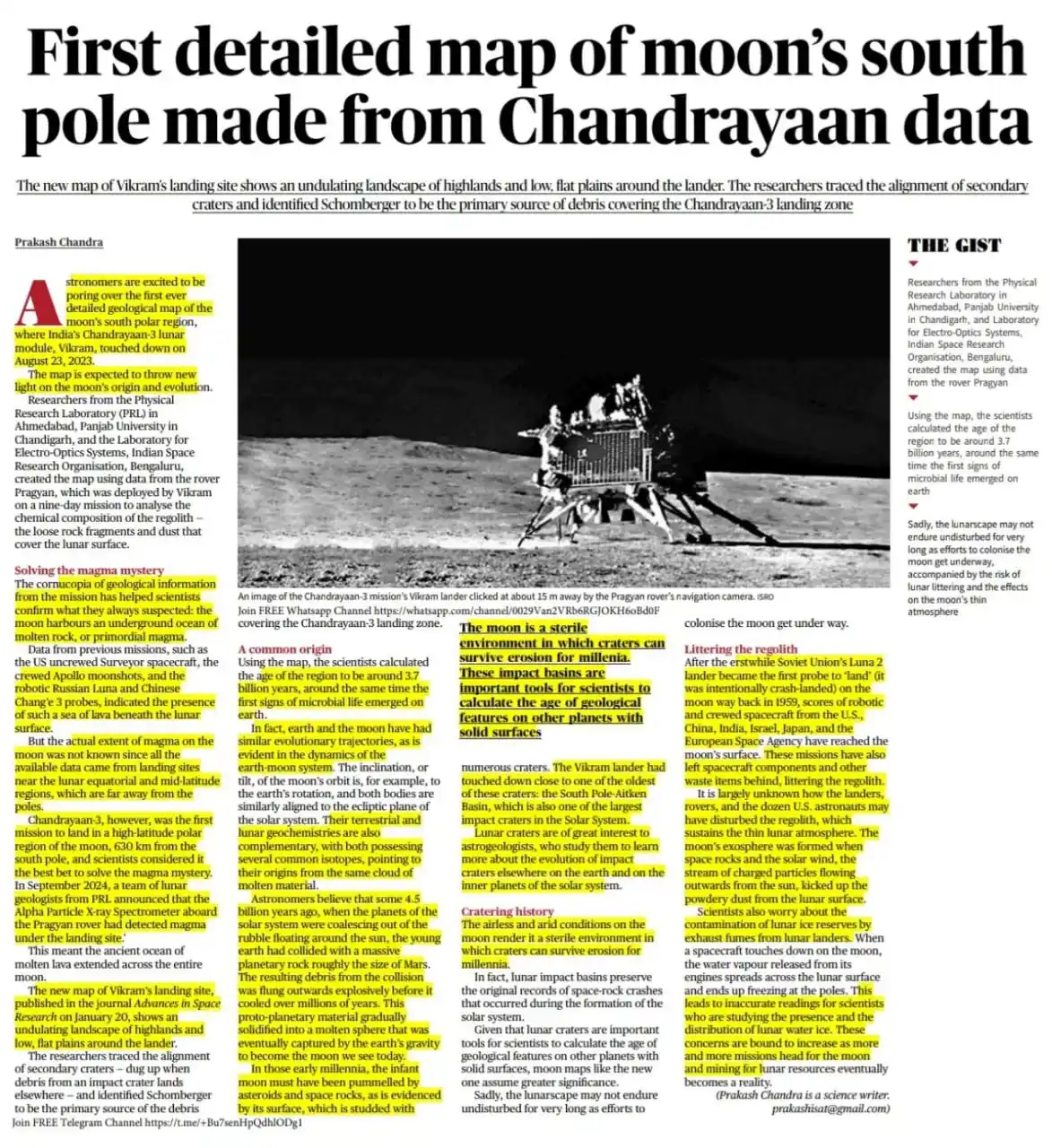
UPSC Science Technology UPSC UPSC UPSC UPSC Upsc Upsc Upsc Upsc UPSC BPSC MPPSC UPPSC CAPF CDS NDA™
March 1, 2025 at 05:08 AM
🔆Current Context: First detailed geological map of the moon's south polar region created using Chandrayaan-3 data, revealing insights into its origin and evolution.
Key Findings:
✅Landing Site: Undulating landscape, highlands and low plains around Vikram lander.
✅Source of Debris: Schomberger crater identified as primary source covering landing zone.
✅Age of Region: 3.7 billion years, coinciding with early microbial life on Earth.
✅Magma Ocean: Confirmed presence of underground molten rock, extending across the entire moon.
✅Evolutionary Trajectories: Earth and moon share similarities, indicating common origin.
✅Impact Craters: Valuable for dating geological features on other planets.
📍Significance:
✅Understanding Moon's History: First detailed map of the south polar region.
✅Comparative Planetology: Insights into Earth-moon system dynamics.
✅Future Missions: Data aids planning for lunar colonization and resource extraction.
Concerns:
✅Lunar Littering: Spacecraft debris and waste items left behind.
✅Regolith Disturbance: Impact of landers, rovers, and human activity on lunar atmosphere.
✅Contamination of Ice Reserves: Exhaust fumes affecting water ice studies.
Possible Questions:
✅Prelims: Which of the following statements regarding the Chandrayaan-3 mission is/are correct?
It was the first mission to land in a high-latitude polar region of the moon.
The mission confirmed the presence of an underground ocean of molten rock on the moon.
The data from the mission is being used to study the impact of lunar littering.
(a) 1 only
(b) 1 and 2 only
(c) 2 and 3 only
(d) 1, 2 and 3
✅Mains: "The Chandrayaan-3 mission's detailed geological map of the moon's south polar region represents a significant leap in our understanding of lunar history and evolution." Discuss this statement, highlighting the key findings of the mission and their implications for future space exploration.

🎉
1